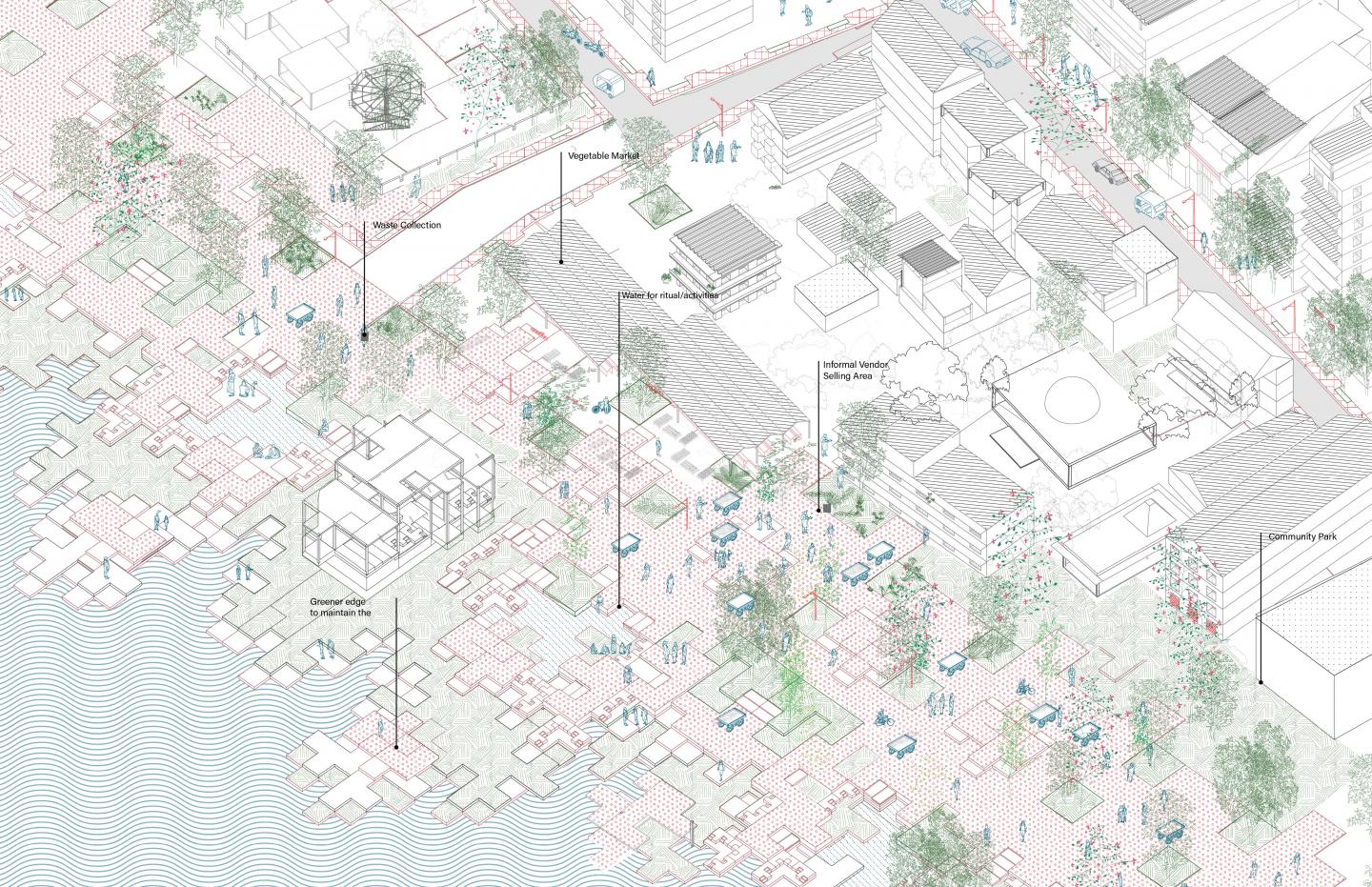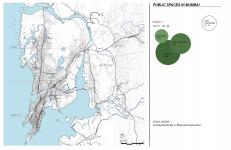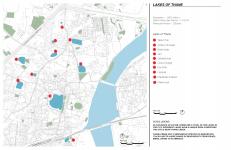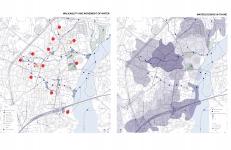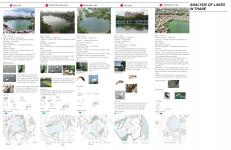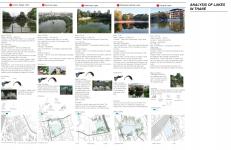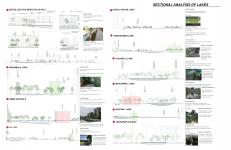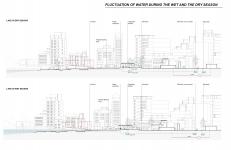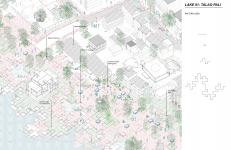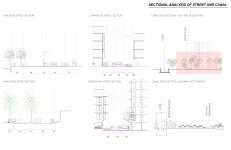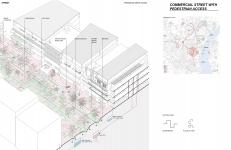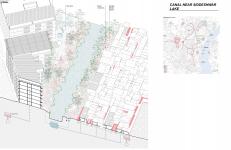Currently, Mumbai has 1.1 m2 per person open space. Historically, the public spaces in India have been lakes, maidans (gathering ground), canals, and parks. The thesis proposes a networked public space in Mumbai. It is in Thane (a region in Mumbai), where it coalesces lakes, streets, and canals into a network. The site is interesting as it has ten lakes in proximity to one another. However, the condition of the lakes has deteriorated due to urbanization and infrastructural issues. Topographically, Thane is 7 m above sea level. Due to this during the monsoon, the city floods regularly.
My proposal addresses the lack of public spaces and, at the same time, tries to alleviate flooding issues in Mumbai during the monsoon. The network is spatialized using infinite sequences/fractals, explored in the scalar approach. The fractals are inspired by indigenous water infrastructure (stepwells and ghats) and temple architecture in India. They were designed based on the repetition and self-similarity of patterns. It is because geometric patterns, symmetry, and alignment were considered major tools for their better integration with nature. Similarly, the network tries to incorporate patterns to form utopian networked spaces. Exploration is at the level of street, canal, and lake edge redesign. These fractals incorporate waste disposal, sewage, and water management infrastructure. It enhances the walkability in the neighborhood and, connects with the existing mobility infrastructure in the city.
2022
Located in Thane, Mumbai
Designer - Pavithra Bhaskaran
Thesis Advisor - Maria Gonzalez Aranguren
